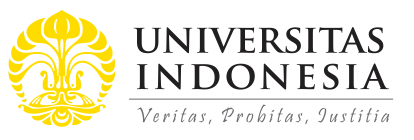Abstract
Income inequality is a persistent phenomenon and fundamental issue of concern, especially in this new digital era, because unequal access to finance has long been recognized as a critical mechanism for generating persistent income inequality. ICT tools and approaches are being used widely today due to their convenience, omnipresence and economy. This study examines the influence of financial development, ICT, and English proficiency on income inequality in Malaysia during the period of 1979-2019. The empirical results based on the ARDL bounds test indicated that financial develop- ment and English proficiency support the hypothesis that both factors can reduce the income gap in the long run. While ICT has shown different results, its improvement has only reduced the income gap in the short term. Hence the need for strengthening ICT policy is crucial as it can lead to develop- ment. Mastery of English is also considered to foster economic resilience.
References
Amiruddin, R., Nor, M. A.H. S., & Ismail, I. (2007). Test for dynamics relationship be- tween financial development and economic growth in Malaysia a vector error correction modelling approach. Gadjah Mada Interna- tional Journal of Business 9(1): 61-79.
Azmi, A. & Said, F. (2007). Sumbangan In- frastruktur Telekomunikasi Terhadap Per- tumbuhan Ekonomi Malaysia. International Journal of Management Studies, 14 (1), 143- 166.
Banerjee, A.V., & Newman, A.F.(1993). Occu- pational choice and the process of develop- ment. J. Polit. Econ. 101 (2), 274–298.
Bitterncourt, M.F. (2006). Financial develop- ment and inequality: Brazil 1985-1999. De- partment of Economics, University of Bris- tol Discussion Paper 06/582.
Claessens, S., & Perotti, E.(2007). Finance and inequality: Channels and evidence. J. Comp. Econ. 35 (4), 748–773.
Clarke, G.R.G., Xu, L.C., & Zou, H., (2006). Finance and income inequality: What do the data tell us? South. Econ. J. 72 (3), 578–596.
Engle, R. F.,& Granger. (1987). Cointegration and error correction: Representation, estima- tion, and testing. Economtrica 55: 251-276. Retrieved from http://www.jstor.org.
Galor, O. & Ziera. J. (1993). Income distribu- tion and macroeconomics. Reviews of Eco- nomics Studies 60:35-52. Gill, S. K. (2002). International communica- tion: English language challenges for Ma- laysia. Serdang: Universiti Putra Malaysia Press.
Hanapiah, M.F. (2004). English language and the language of development: A Malaysian perspective. Jurnal Kemanusiaan: 106-120.
Ismail, M.H. (2012). Kajian mengenai keboleh- pasaran siswazah di Malaysia: tinjauan dari perspektif majikan. Prosiding Persidangan Kebangsaan Ekonomi Malaysia ke VII (PERKEM VII), 2:906-913.
Johansen, S. (1991). Estimation and hypo- thesis of cointegrating vectors in Gaus- sian vector autoregressive models. Eco- nometrica 59 (6): 1551-1580. https://doi. org/10.2307/2938278.
Koh, S.G.M., Lee, G.H.Y., & Bomhoff, E.J. (2019). The income inequality, financial depth and economic growth nexus in China. The world Economy, 43, 412-427. https:// doi.org/10.1111/twec.12825
Law, S. & Tan, H.B. (2009). The role of finan- cial development on income inequality in Malaysia. Journal of Economic Develop- ment, 34,(2):153-167.
Liang, Z. (2006). Financial development and income inequality in rural China 1991-2000. World Institute for Development Economic Research Paper, 2006/96.
Maharam, M. (2016). Penguasaan bahasa Ing- geris dalam kalangan pelajar tahun satu di UKM. Issues in language studies 5(2):1-15. Retrieved from https://doi.org/10.33736/ ils.1636.2016
Narayan, P.K. (2005). The saving and invest- ment nexus from China: evidence from coin- tegration test. Applied Economics 37. https:// doi.org/10.1080/00036840500278103
Pesaran, H. M. & Shin, Y. (1999) Autoregres- sive distributed lag modelling approach to cointegration analysis, in: S. Storm (Ed.) Econometrics and Economic Theory in the 20th Century: The Ragnar Frisch Centennial Symposium, Chapter 11 (Cambridge: Cam- bridge University Press)
Pesaran, H. M. et al. (2001) Bounds testing approaches to the analysis of level relation- ships, Journal of Applied Econometrics, 16, pp. 289-326. https://doi.org/10.1002/jae.616
Ragayah, M.Z. (1998). Why Income Inequality Rises in Malaysia after 1990? . Paper pre- sented at the 6th convention of the East Asian Economic Association, Kitakyushu Japan 4-5 September.
Ragayah, M.Z., R. Ismail, & Shari, I. (2000). The impact of industrialization on income distribution in Malaysia. Paper presented at the 7th convention of the East Asian Econom- ic Association, Singapore 17-18 November.
Ridzuan, A.R., Zakaria, S.,Fianto, B.A., Yusoff, N.Y.M., Sulaiman, N.F.C., Razak, M.I., & Siswanti, L. A. (2020). Nexus between fi- nancial development and income inequality before pandemic covid-19: does financial kuznet curve exist in Malaysia, Indonesia, Thailand and Philipines. International Jour- nal of Energy Economics and Policy, 11(2), 260-271. http://repository.unair.ac.id/id/ eprint/116320
Shahbaz, M. & Islam, F. (2011). Financial de- velopment and income inequality in Paki- stan: An application of ARDL approach. MPRA Paper No 28222.
Tong, C. F., Salah, A. (2020). Does finan- cial development moderate the effect on growth volatility? The experience of Ma- laysia. The Journal of Applied Econom- ics Research, 14(4): 361-381. https://doi. org/10.1177/0973801020953400
Recommended Citation
Shaharuddin, Norhasimah; Azam, Abdul Hafiz Mohd; Wahab, Mohd Hafiz Abdul; Karim, Norzitah Abdul; Hilmiyah, Nurul; Shakrein, Sharul Shahida; and Osman, Adibah Alawiah
(2024)
"Impact of the Relationship among Financial Development, ICT and English Proficiency on Income Inequality: Evidence from Malaysia,"
Indonesian Capital Market Review: Vol. 16:
No.
1, Article 3.
DOI: 10.21002/icmr.v16i1.1194
Available at:
https://scholarhub.ui.ac.id/icmr/vol16/iss1/3












